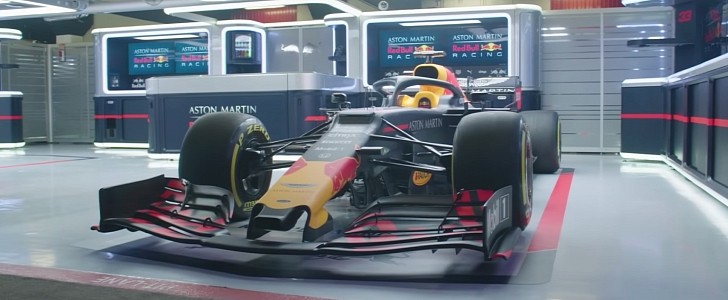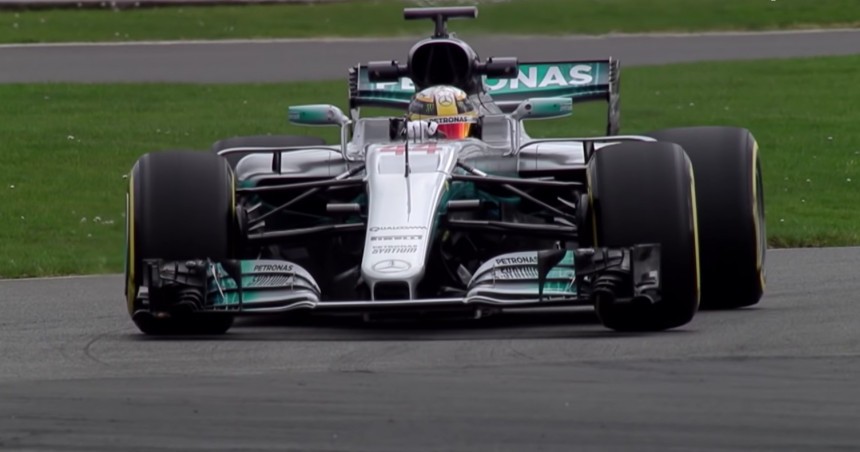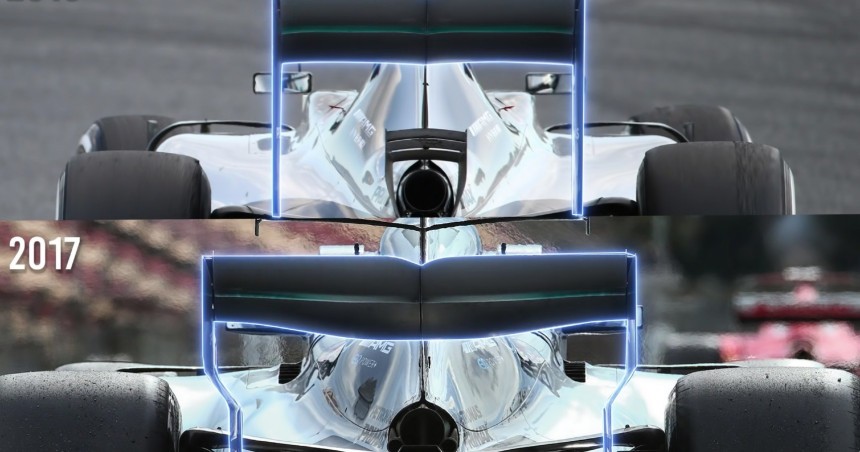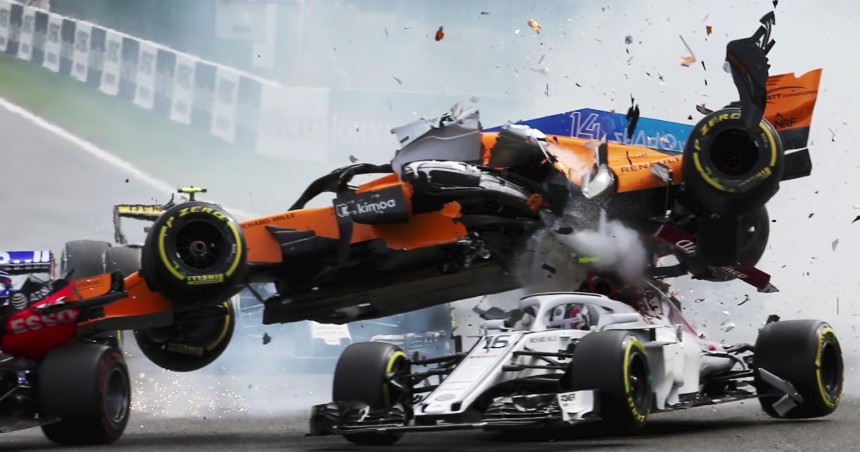Maroon 5 sang Beautiful Mistakes, and while the song doesn’t make any references to the automotive world, some of the most record-breaking milestones in F1 are due to mistakes. According to Edd Straw of The Race, sometimes errors produce impeccable results, exactly what the last generation of F1 cars was.
The last-gen of F1 cars developed between 2017 and 2021 (wider with higher downforce) were absolute monsters on the track. These are one of the fastest F1 cars ever produced. Yet, they not only completely failed to solve the problems regulations were originally meant to solve, but also made them worse.
Either way, this generation of F1 cars will go down in history as the most remarkable cast in Grand Prix.
While they were a big mistake, the five years these speed demons raced on circuits of the world will go down as the most spectacular in F1 history.
So, what was really special about these cars? What made them quick, and what was so imperfect about their creation?
Well, in the height of developing cars that aren’t just fast but track-ready, F1 got lost formulating rule changes for the 2017 season. The result was higher downforce and significantly quicker F1 cars.
These speedsters were also dramatically different from the previous generation of machines in the 2014 – 2016 seasons.
For starters, the 2017 F1 cars' width increased from 1.8 meters to 2 meters, with the minimum weight raised to 728 kilograms (1,605 lbs). Also, the front tires became six centimeters wider, and the rear tires eight centimeters wider for extra grip.
On the rear, the wing was wider by 20 centimeters and lowered by 15 cm. The rear diffuser was higher by 5 cm and 17.5 cm longer than in 2016. Adjustments on the front-end meant the front wing was 15-cm wider, with the result of all that being a significant rise in downforce.
These changes also affected the lap times, which dropped significantly. For instance, the original target set by the F1 strategy group in 2015 was for the 2017 F1 cars to be 5 to 6 seconds faster on each lap. Take note that this was when F1 wanted to bring back refueling.
However, that decision didn’t pass after teams presented data demonstrating that refueling would make F1 racing worse rather than improve it.
Based on the pace presented at the venues that appeared in the 2015 and 2017 calendars, the average lap time drop was 4.2-seconds (that was just a start for this generation of F1 cars).
While the teams worked to improve their performance, F1 made further rule changes. In 2018, the Halo Cockpit Protection System, initially a controversial measure, became mandatory. Later, this introduction proved its worth for Sauber driver Charles LeClerc when a McLaren driven by Fernando Alonso landed on him at the beginning of the Belgian Grand Prix. F1 also banned shark fins and t-wings, increasing the minimum weight to 734 kilograms (1,618 lbs).
They made further changes in 2019, with the wings adjusted a further 20 cm wide to 2 meters, made them 2 cm taller and 2.5 cm deeper. Officials also reduced the number of aero elements to five, meaning cars needed to have far simpler profiles, making the flicks and protrusions a thing of the past.
All these changes helped curb the rate of lap time improvements. These regulations did not change for the final season of their use in 2020. However, the impact of the global health crisis meant that these cars went almost unchanged to the following season.
As a result, the 2020 F1 cars came out as the quickest in race history. From 2017 to 2021, when this generation of cars raced, all venues produced their fastest ever official F1 lap times in their current configurations.
Either way, this generation of F1 cars will go down in history as the most remarkable cast in Grand Prix.
While they were a big mistake, the five years these speed demons raced on circuits of the world will go down as the most spectacular in F1 history.
So, what was really special about these cars? What made them quick, and what was so imperfect about their creation?
These speedsters were also dramatically different from the previous generation of machines in the 2014 – 2016 seasons.
For starters, the 2017 F1 cars' width increased from 1.8 meters to 2 meters, with the minimum weight raised to 728 kilograms (1,605 lbs). Also, the front tires became six centimeters wider, and the rear tires eight centimeters wider for extra grip.
On the rear, the wing was wider by 20 centimeters and lowered by 15 cm. The rear diffuser was higher by 5 cm and 17.5 cm longer than in 2016. Adjustments on the front-end meant the front wing was 15-cm wider, with the result of all that being a significant rise in downforce.
However, that decision didn’t pass after teams presented data demonstrating that refueling would make F1 racing worse rather than improve it.
Based on the pace presented at the venues that appeared in the 2015 and 2017 calendars, the average lap time drop was 4.2-seconds (that was just a start for this generation of F1 cars).
While the teams worked to improve their performance, F1 made further rule changes. In 2018, the Halo Cockpit Protection System, initially a controversial measure, became mandatory. Later, this introduction proved its worth for Sauber driver Charles LeClerc when a McLaren driven by Fernando Alonso landed on him at the beginning of the Belgian Grand Prix. F1 also banned shark fins and t-wings, increasing the minimum weight to 734 kilograms (1,618 lbs).
All these changes helped curb the rate of lap time improvements. These regulations did not change for the final season of their use in 2020. However, the impact of the global health crisis meant that these cars went almost unchanged to the following season.
As a result, the 2020 F1 cars came out as the quickest in race history. From 2017 to 2021, when this generation of cars raced, all venues produced their fastest ever official F1 lap times in their current configurations.


















